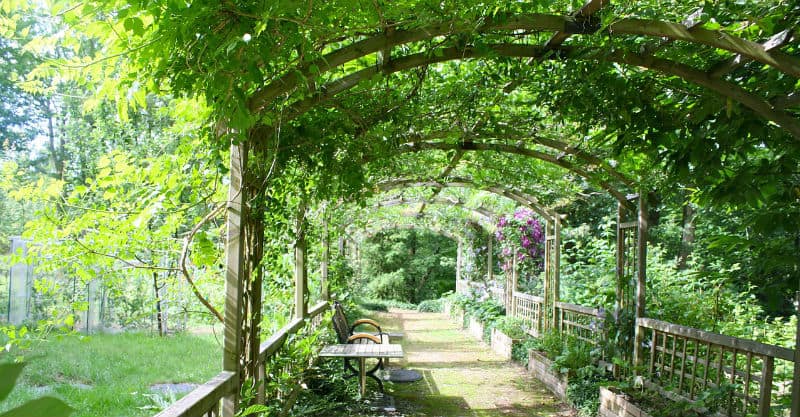10 Amazing easy to grow climbers for a pergola and covering a trellis Do you want to improve the quality of your outdoor living space? Are you looking for a way to transform your patio into a visually appealing area? Want a place to keep your extra potted plants? Well, a pergola is a perfect solution. A pergola is an outdoor structure that can change your back garden from a dull open area to an…
Climbing plants for shade Most gardens have a shady spot, usually against a North or East-facing wall or fence where conditions can also be dry but can equally be damp. These areas are usually left bare but this does not need to be the case. There are plenty of climbing plants that like shade and are well suited for these conditions as it is most like the natural environment they would usually grow, in areas such as woodlands areas under…
Lonicera (Honeysuckle) Honeysuckle Climbers Lonicera, more commonly known as the ‘Honeysuckle’ plant is one of the most popular garden climbing plants and is often seen in many gardens throughout the UK. They are available as evergreen varieties, such as Lonicera japonica ‘Halliana’ AGM and the Lonicera Henryi. Deciduous cultivars include Lonicera periclymenum and the sempervirens varieties. These climbing honeysuckles are perfect for climbing over pergolas, fences and alternatively up walls too. Most of these climbers have highly perfumed…
Why is my Wisteria not flowering? Wisteria is a climbing plant that produces masses of long petulant, sweetly scented flowers that are usually lilac-blue, blue or white in colour. They lend themselves to many a situation and look fantastic when grown in a prominent position in pots or in the ground. Wisteria can be affected by a few problems including sudden dieback and root rot. The most common and frustrating problem is that they can be known…
When to prune Wisteria and the importance of it Wisteria is a beautiful climbing plant and there is no mistaking the masses of (usually) blue or white petulant, sweetly scented flowers that appear upon their twining stems. These usually appear from the late spring through to mid-summer. Pruning Wisteria can be daunting at first, but it doesn’t need to be. Regular pruning will reward you with more flowers and is worth the effort. Wisterias do not need to…





